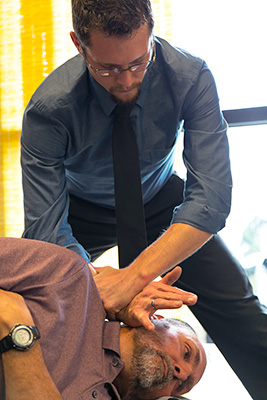 Some people may use the term dizziness when referring to vertigo, disequilibrium, or dizziness itself. It is important to know how each of these conditions differ and how to find help in alleviating them. Let’s take a closer look at each one and what it feels like:
Some people may use the term dizziness when referring to vertigo, disequilibrium, or dizziness itself. It is important to know how each of these conditions differ and how to find help in alleviating them. Let’s take a closer look at each one and what it feels like:
Communication to and from the brain and body are vital in order for the body to maintain balance. The body contains many sensors that tell the brain where it is located. For example, sensors in the feet relay to the brain whether the body is standing, sitting, or laying down.
The brainstem acts as the communication highway between the brain and body as part of the central nervous system. The body sends signals to the brain and, in turn, the brain tells the muscles what to do to keep the body functioning properly. If trauma has caused one of the bones of the neck to misalign and put pressure on the brainstem, the entire system of the body can be thrown off. How does this happen?
Any type of trauma to the head or neck – sports injuries, trips and falls, vehicle accidents, and blows to the head – can cause the C1 vertebra to move out of place. Due to the mobility and shape of this bone, it is more susceptible to misalignment than other bones of the spine. If misaligned, the brainstem can become stressed and improper signals may be sent to the brain regarding where the body is located, thus creating the sensation of vertigo.
Using a method that is gentle and precise, we help the atlas (C1) move back into its original position. This may lead to significant relief of vertigo and other balance problems. Some even see their vertigo disappear and not return.
To schedule a consultation with Dr. Joe Perin, call our Vancouver office at 360-569-1740. You can also click the button below.
If you are outside of the local area, you can find an Upper Cervical Doctor near you at www.uppercervicalawareness.com.



